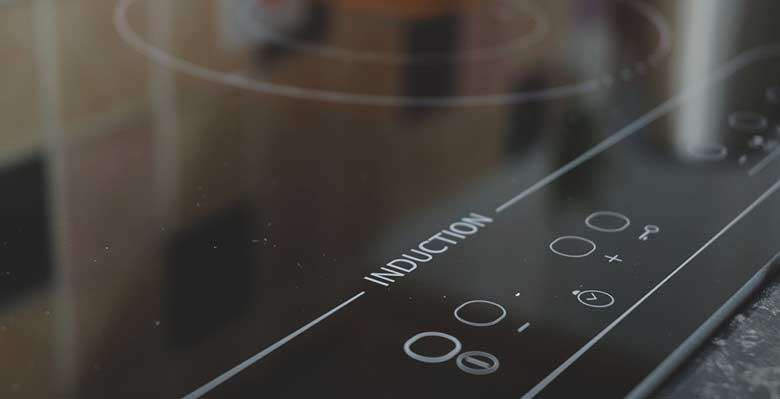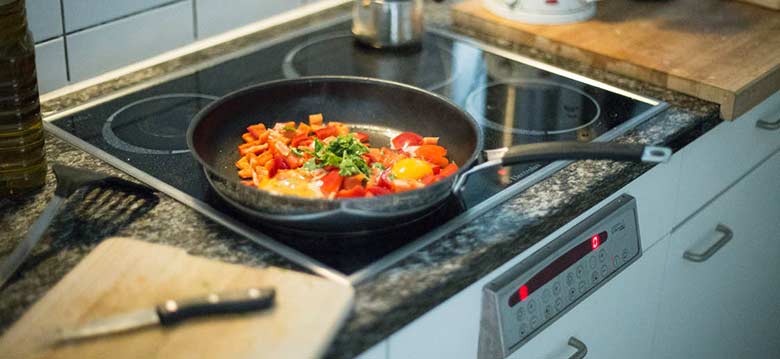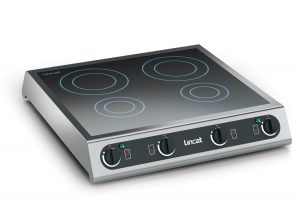
Using magnets to cook food sounds like some sort of sci-fi vision of the future, but in reality, it is happening in home and professional kitchens all over the globe.
Induction cookers are growing in usage within professional kitchens as the technology has finally begun to reach maturity, and manufacturers are now rapidly adding induction ranges to their popular product lineups.
To really grasp the benefits of induction cooking, you’ve first got to understand how they work, and how they are helping keep kitchens cooler and more efficient.
The basic science behind induction cooking
The simple part: Induction means electromagnetic induction, this creates electricity via magnetism.
The slightly less simple but still simple part: You don’t need to know much about electromagnetism to understand induction cookery — simply that a changing electric current can make magnetism and a changing magnetic field can make electricity. When you hear someone talking about induction or something that uses induction, all it means is that magnetism is being used to generate electricity.
So that means that an induction hob (or cooktop) is simply an electromagnet that you use to cook food with.
The glass hob surface is usually made from a hard-wearing material or composite, and covers an electronically controlled coil of metal, turning on the power through the coil creates a magnetic field all around it and above it.

This process doesn’t actually generate any heat whatsoever until a magnetic metallic object — such as a pan — is placed on the surface.
When you stand a suitable cooking pan on top of an induction cooktop that’s powered up, the magnetic field produced by the cooktop penetrates the metal of the pan. So we have a fluctuating magnetic field moving around inside a piece of metal (the base and sides of the pan)—and that makes an electric current flow through the pan too (that’s all that induction means).
So we have a fluctuating magnetic field moving around inside a piece of metal (the base and sides of the pan)—and that makes an electric current flow through the pan too (that’s all that induction means).
Now, this is not quite the same as the electric current that flows through a wire, carrying electrical energy in a straight line from (say) a battery to a torch bulb.
It’s a kind of whirling, swirling electric current with lots of energy but nowhere to go. As it swirls around inside the metal’s crystalline structure, it dissipates its energy.
So the metal pan gets hot and heats up whatever food is inside it, first by conduction (it passes its heat energy directly to the food) but also by convection (liquid food rises and falls in the pan carrying heat with it).
If you’re still confused here’s a little explanation courtesy of explainthatstuff.com:

Why induction hobs are beneficial to professional kitchens
Dumping that gas-powered or standard electric ring hob might be easier said than done, but there are few solid reasons why the switch could benefit your kitchen or catering establishment.
 Your pans heat up almost instantly, completely different from heating up a pan to the right temperature over time, which means a much quicker cooking process.
Your pans heat up almost instantly, completely different from heating up a pan to the right temperature over time, which means a much quicker cooking process.
By getting rid of the flame or heating element, the overall process generates less excess heat, meaning a kitchen that stays much cooler during a busy service period.
Much safer, heat only appears when the cooking pan is placed on the heating area as the pan is actually heating up, not the heat region. (Warning: Don’t ever put your hand on a cooktop that has recently been used for cooking because it may have become dangerously hot from the cooking pan that’s been standing on top of it.)
As a result of using this method, a normal professional kitchen could increase productivity anywhere from 25 to 50% when compared to traditional electric and gas hobs — which could be a substantial saving for many businesses out there.
We recommend portable induction hobs to the plethora of mobile caterers who want the flexibility of cooking things fast, and in an energy efficient package.
Although prices can sometimes be slightly higher than gas or standard electric variants of the same oven and cooktop range, the operational and kitchen efficiency savings could be the best investment that your professional kitchen ever makes.
If you would like to learn more about how your commercial kitchen premises could benefit from the addition of induction cooking equpiment then please call our service team on 01977 687 665.
